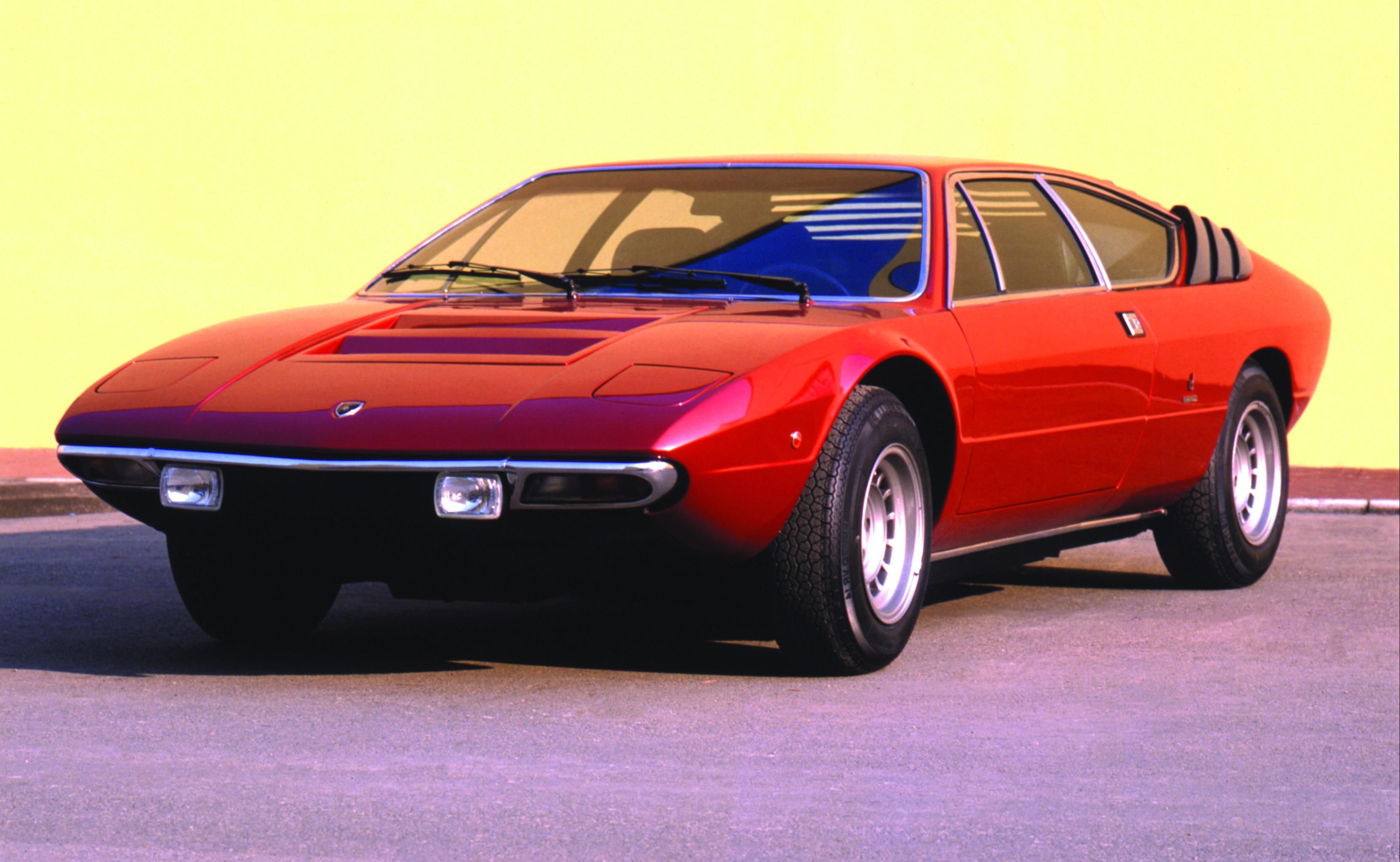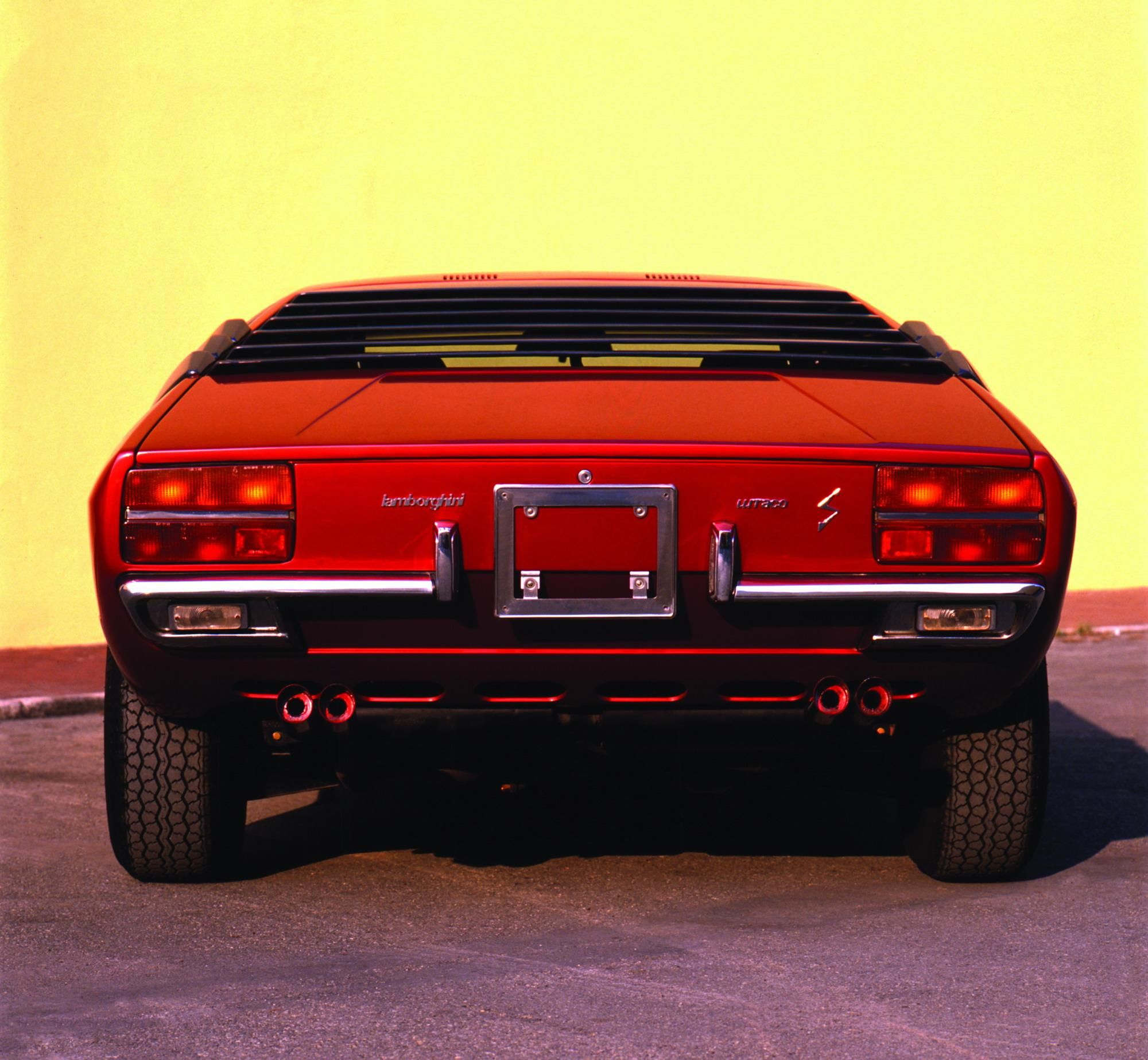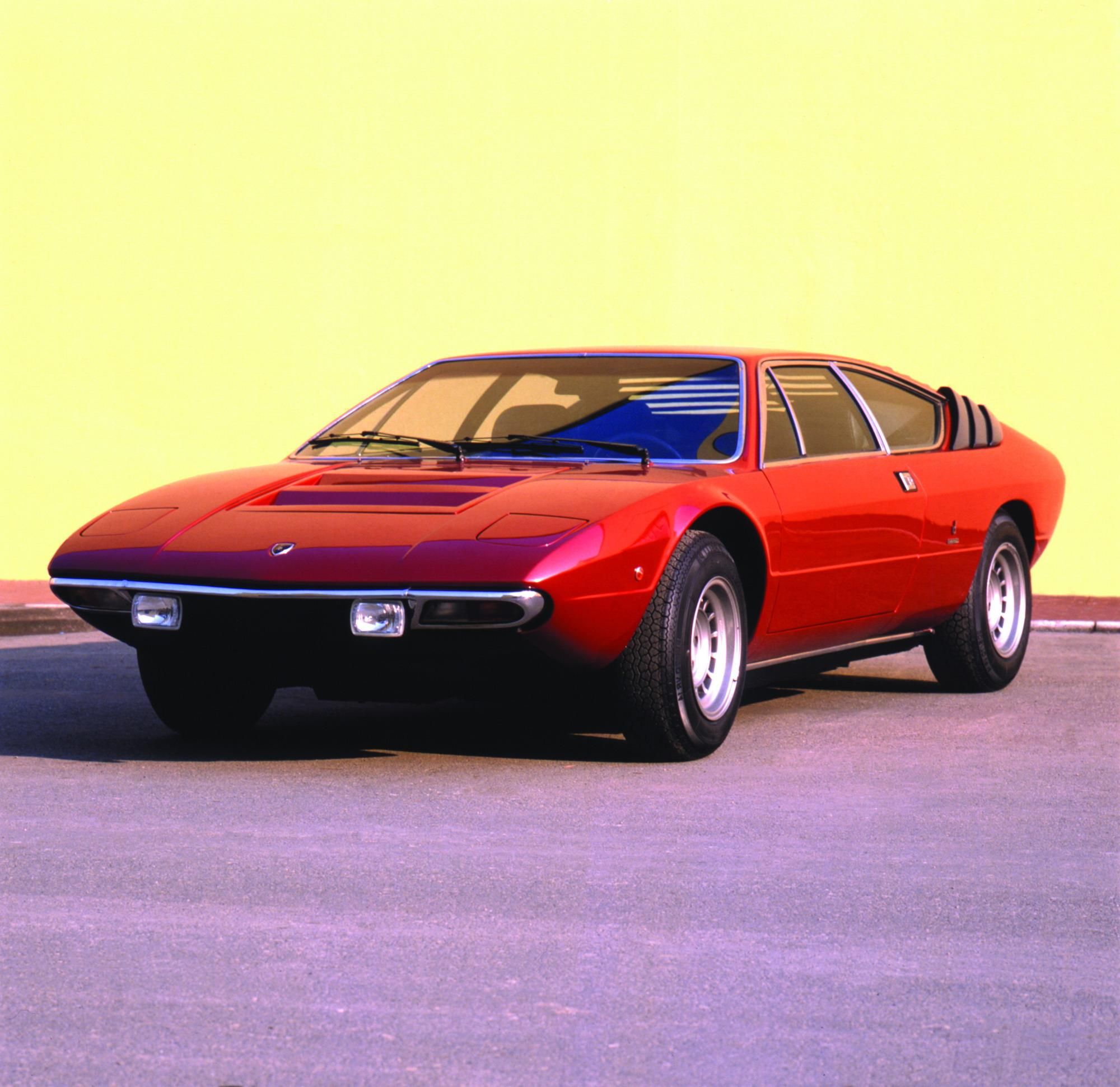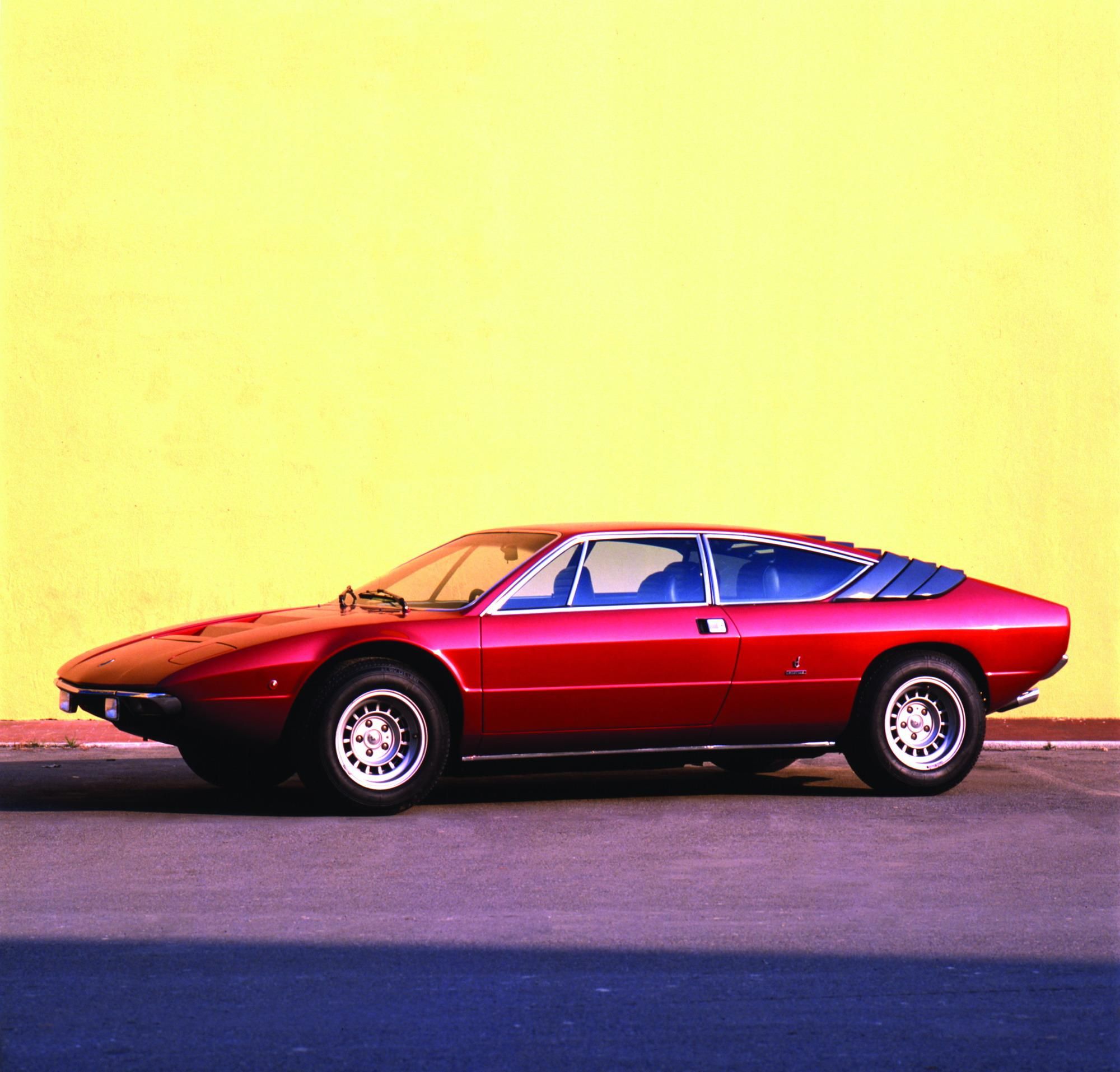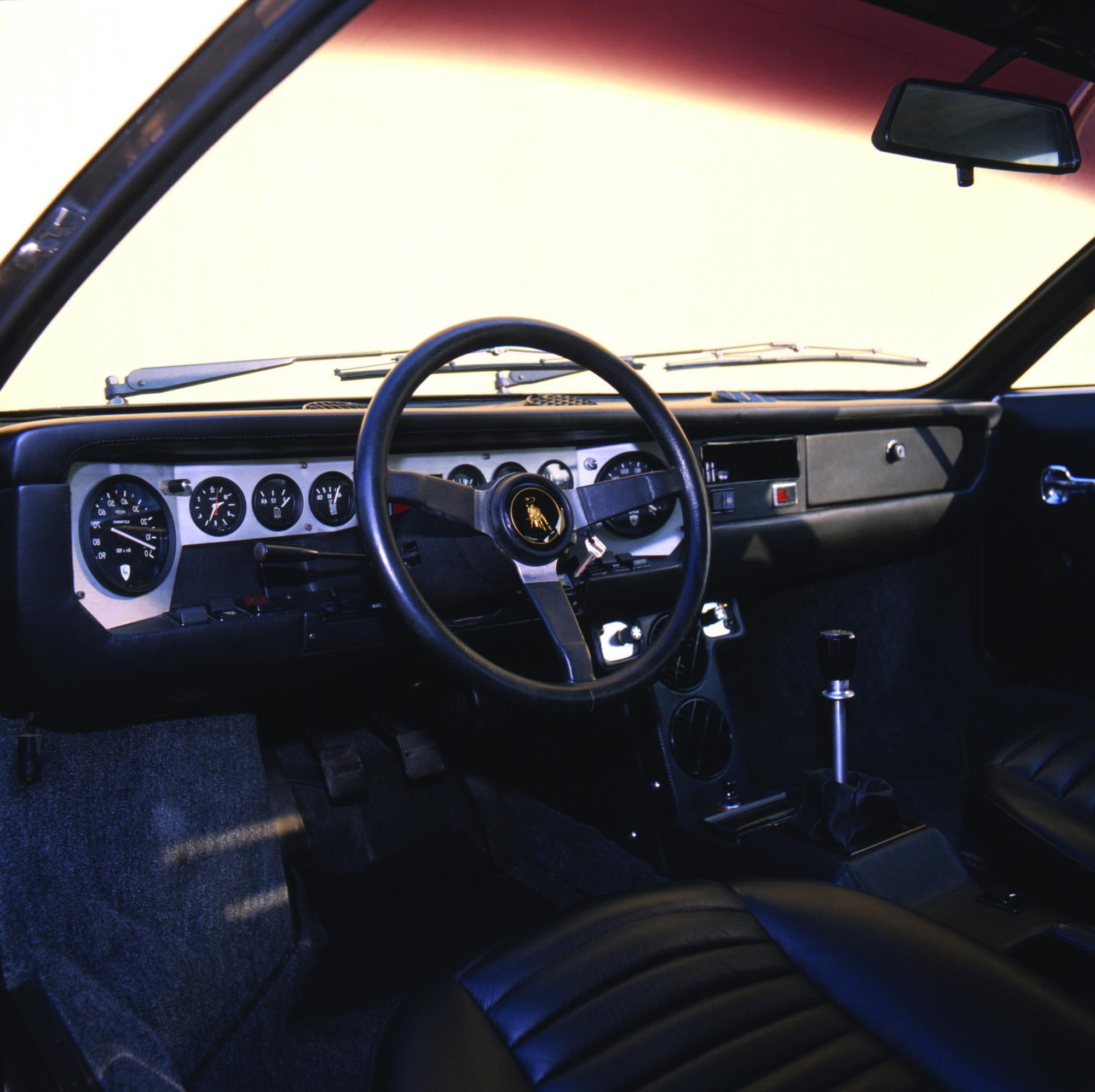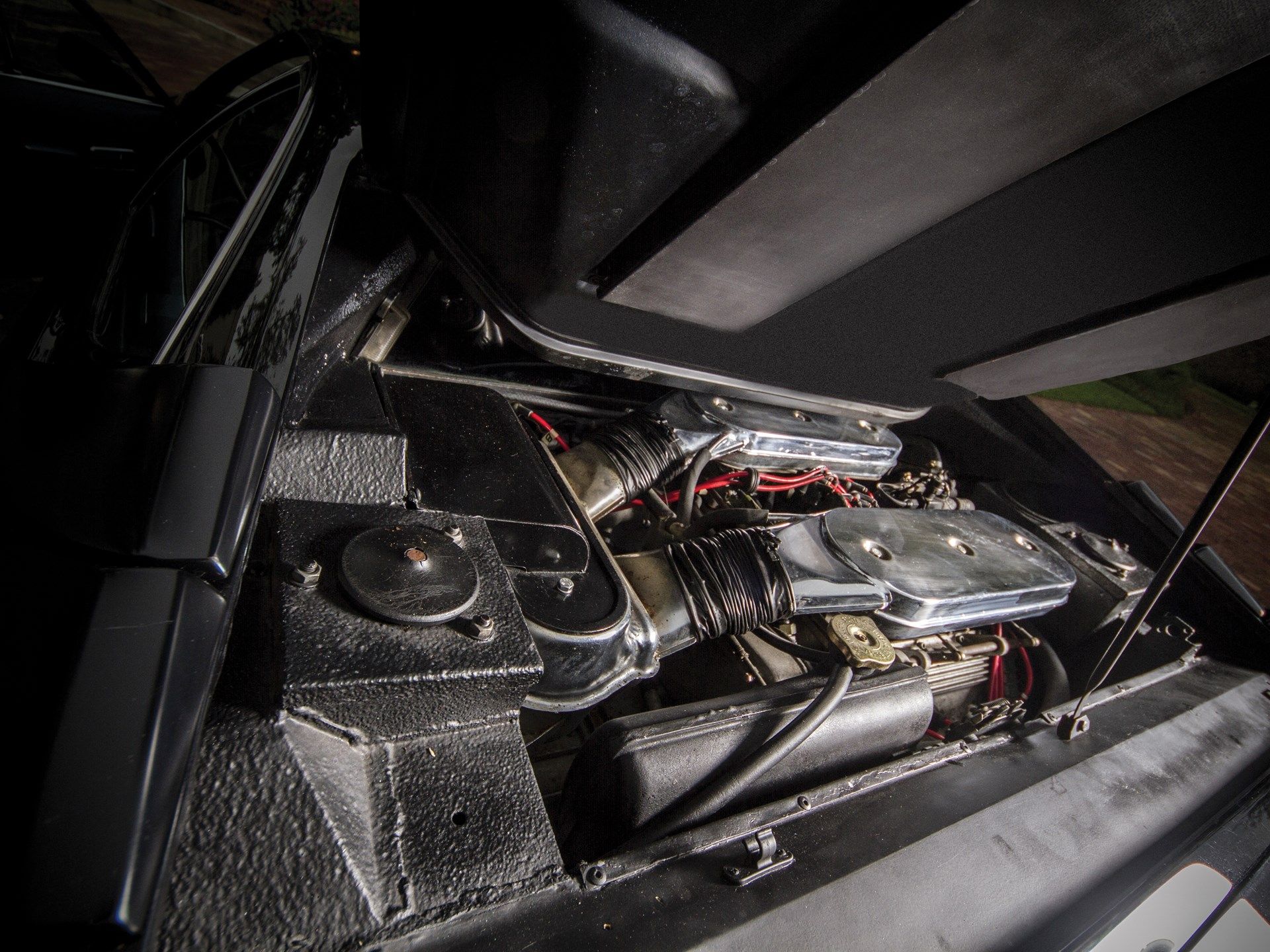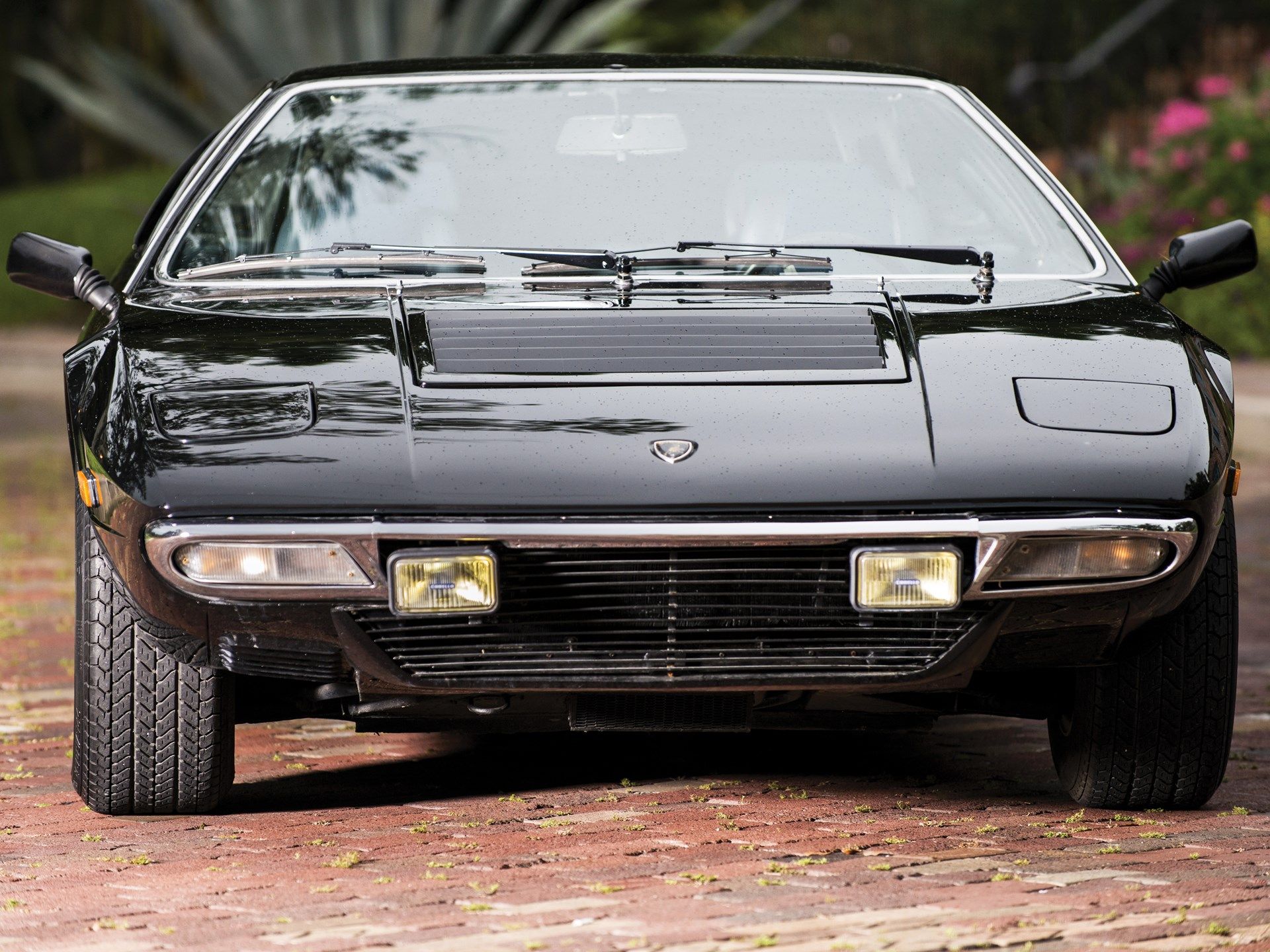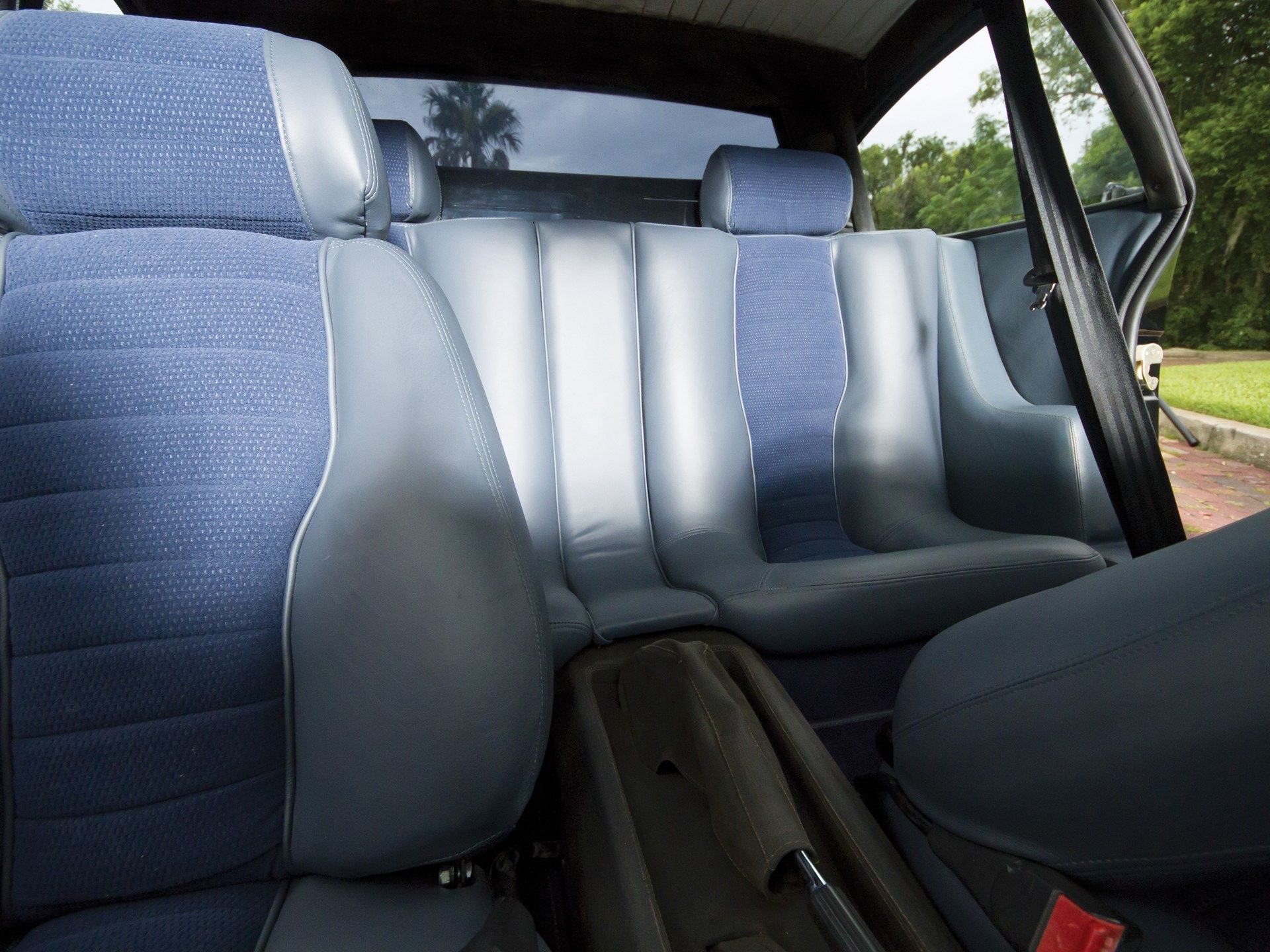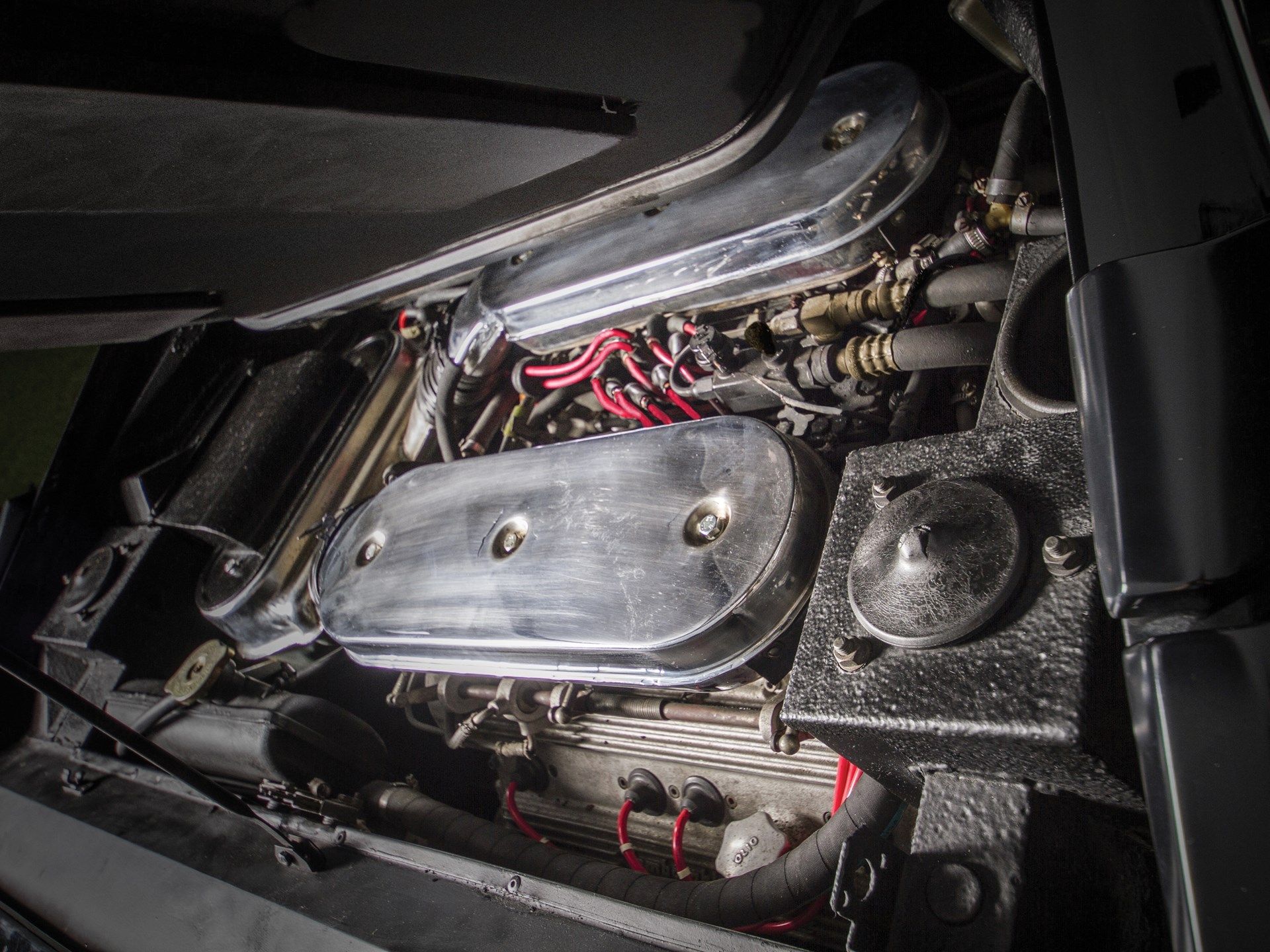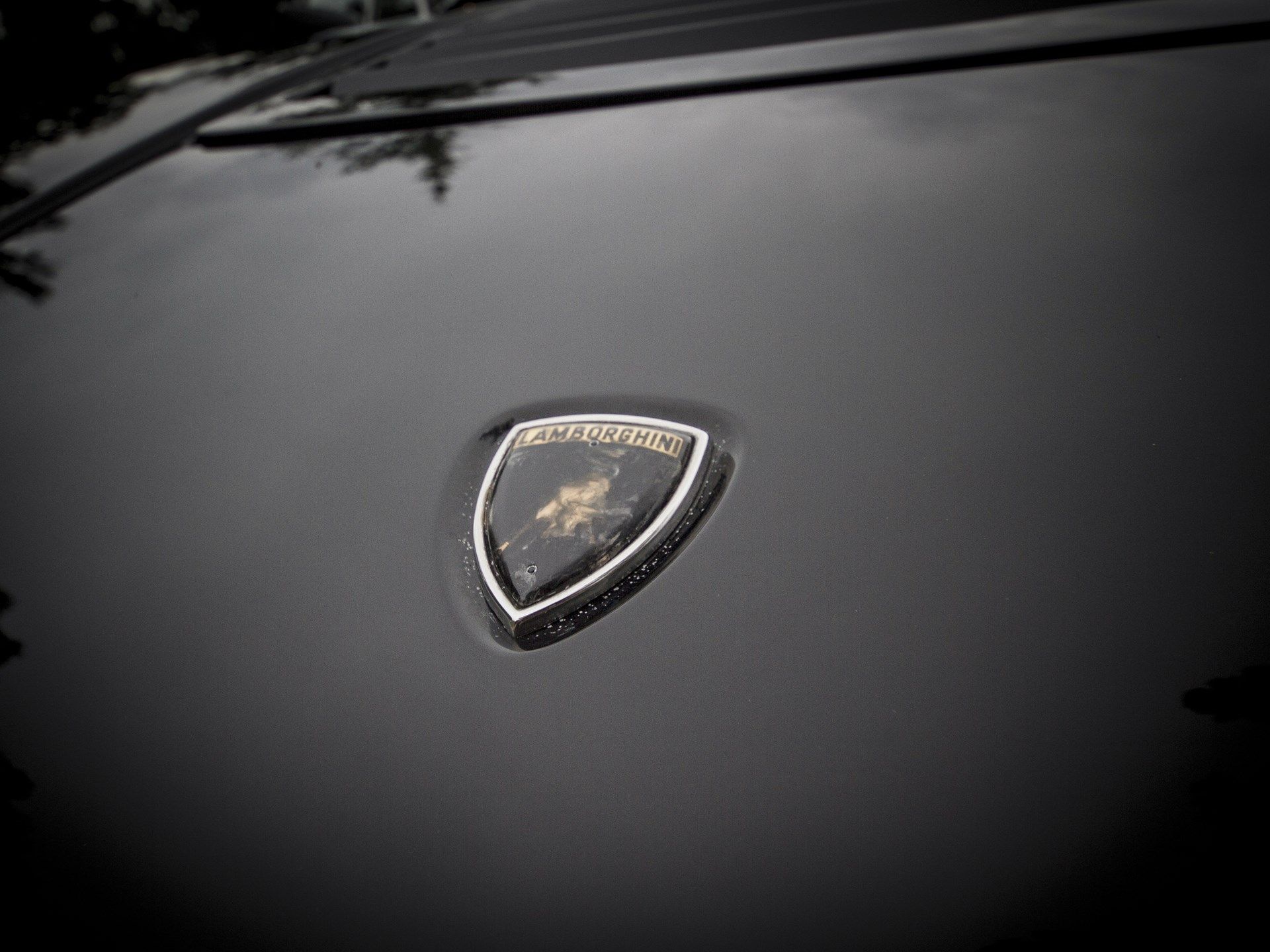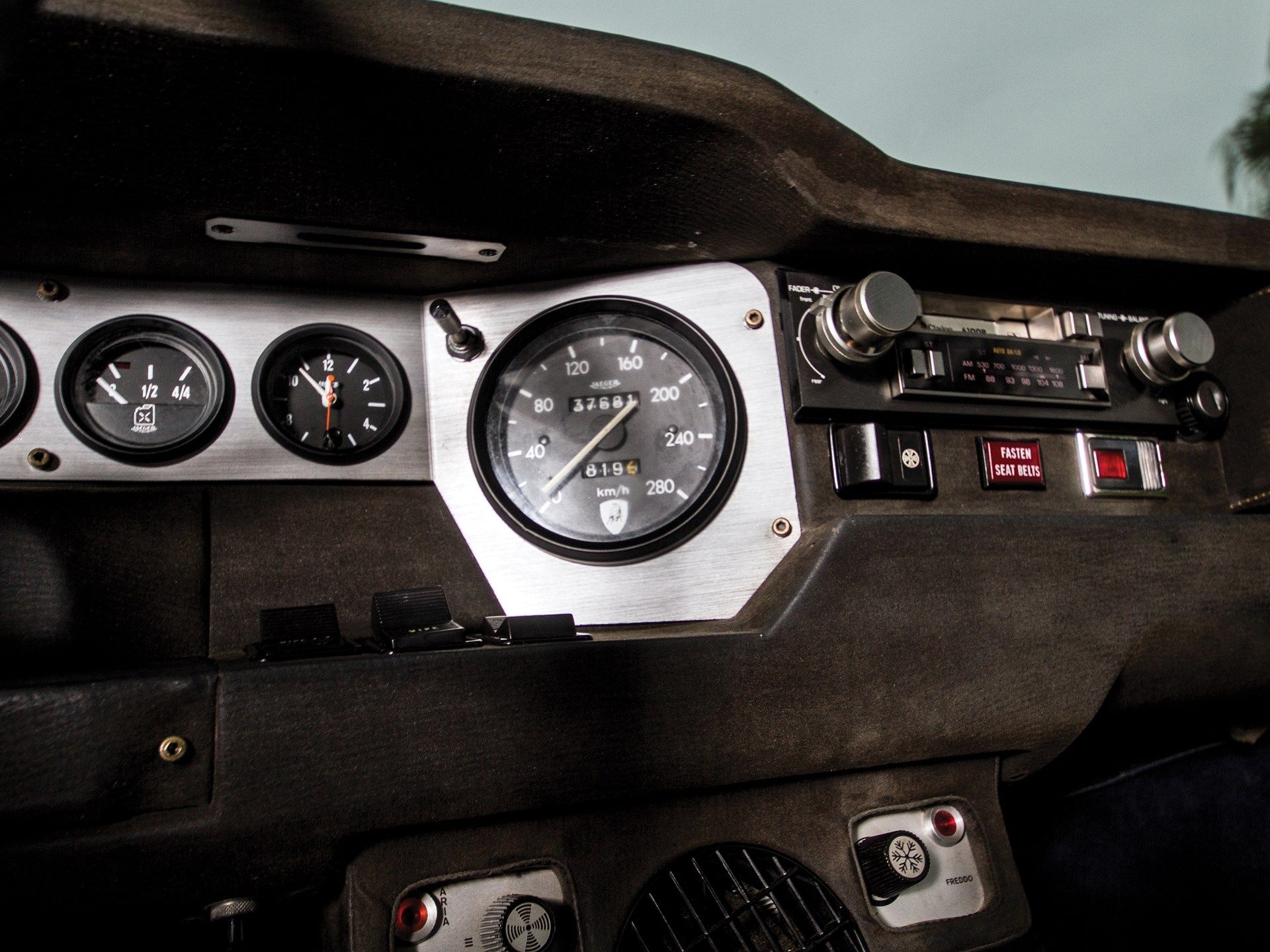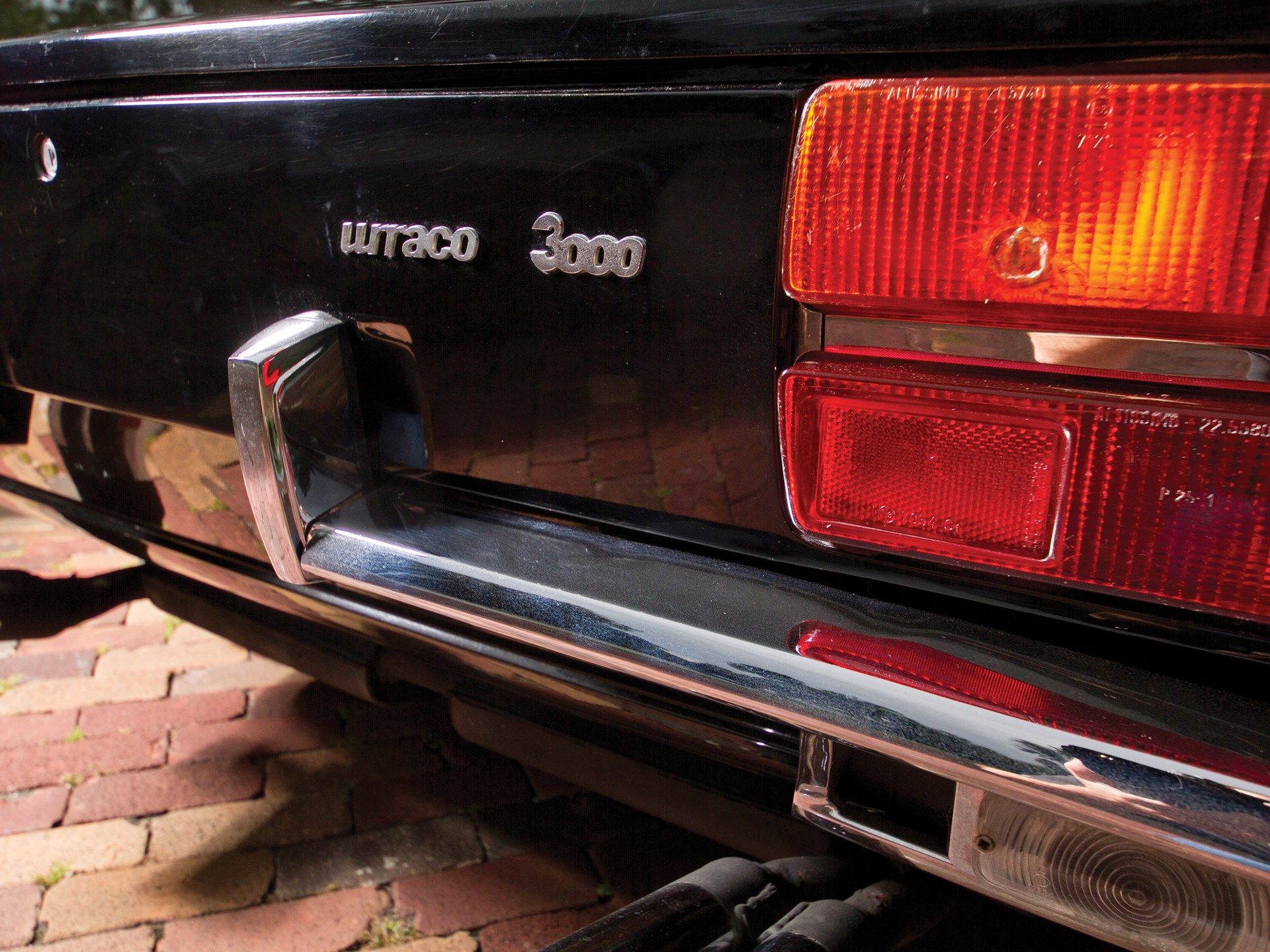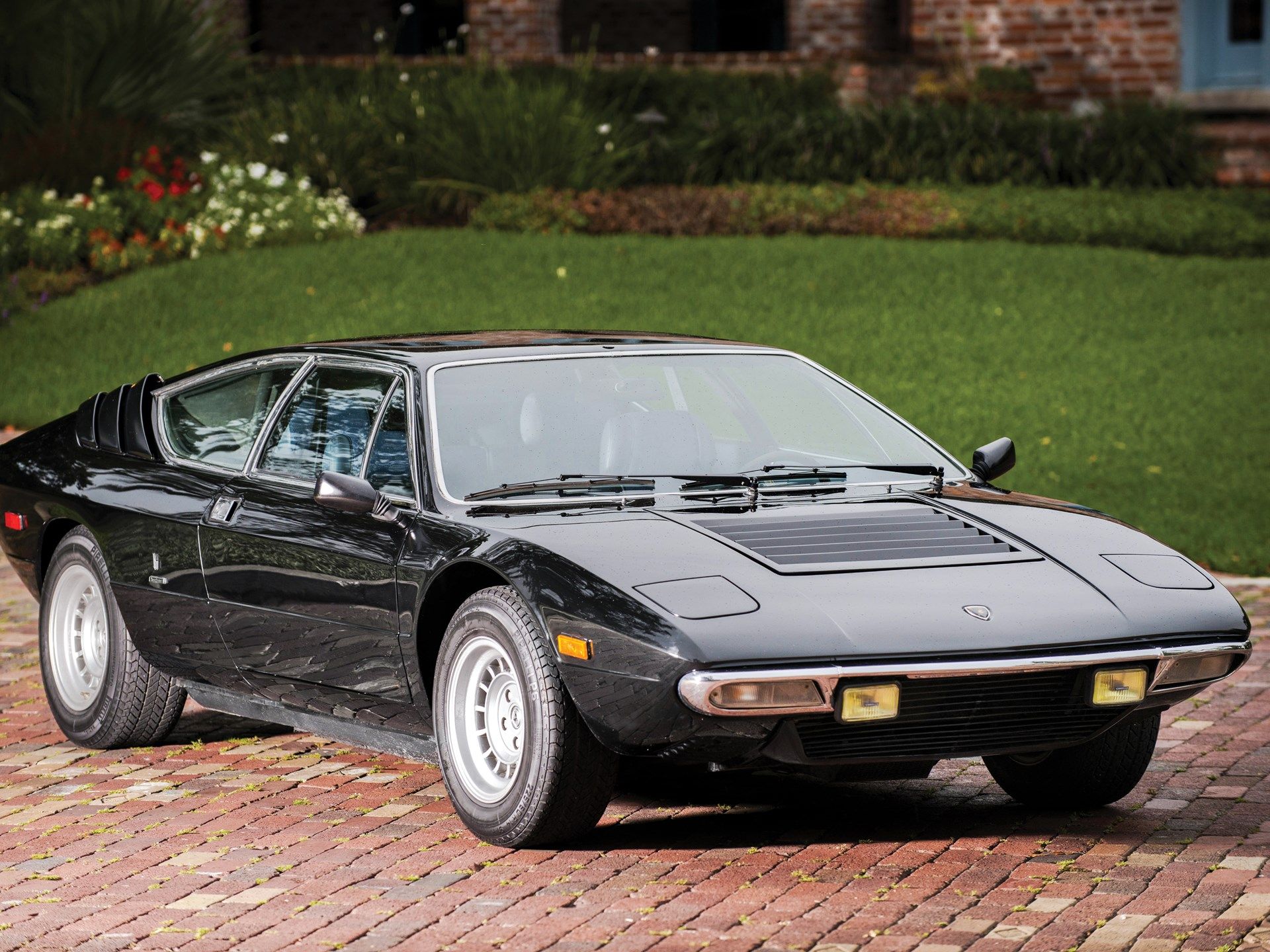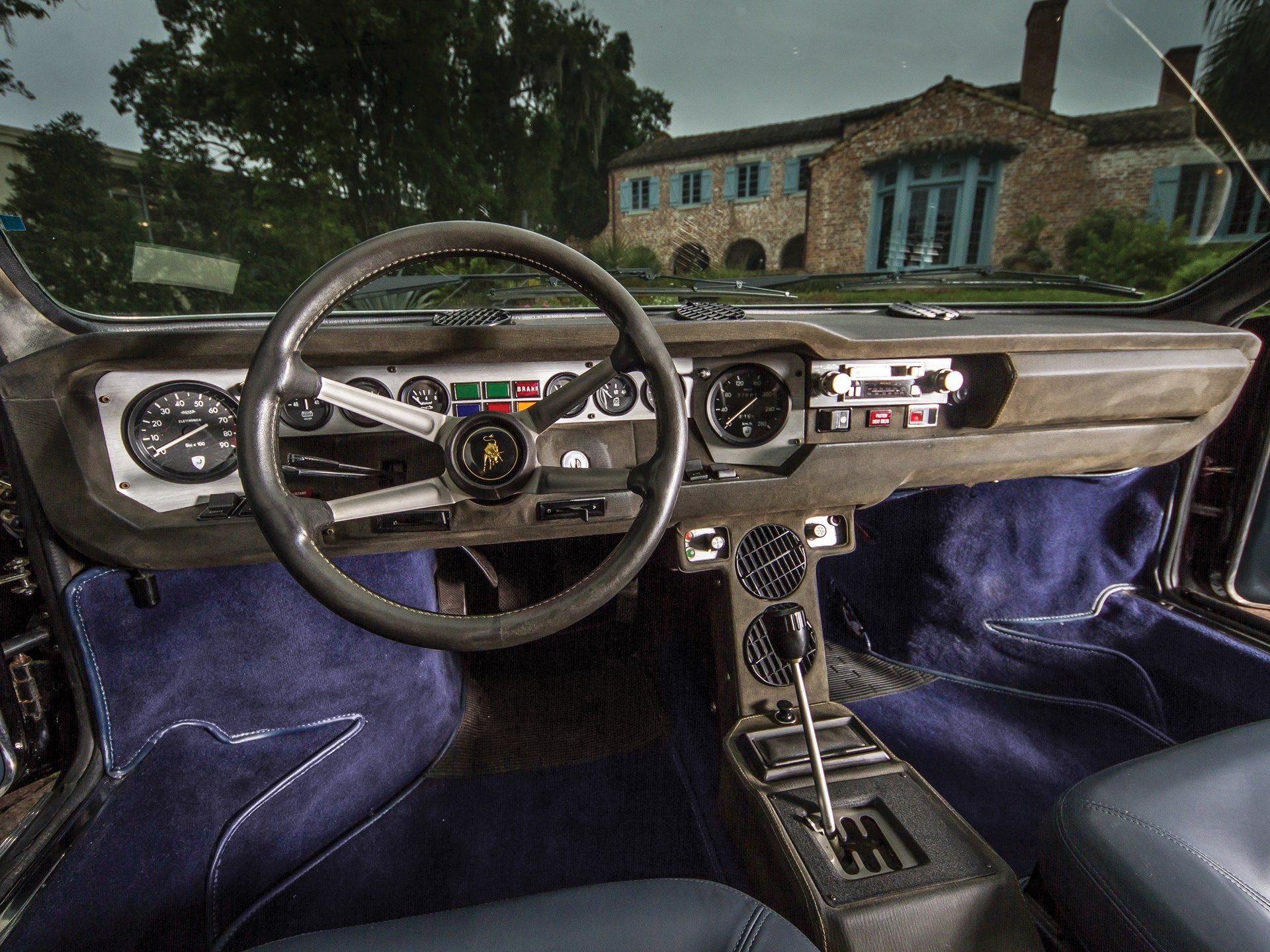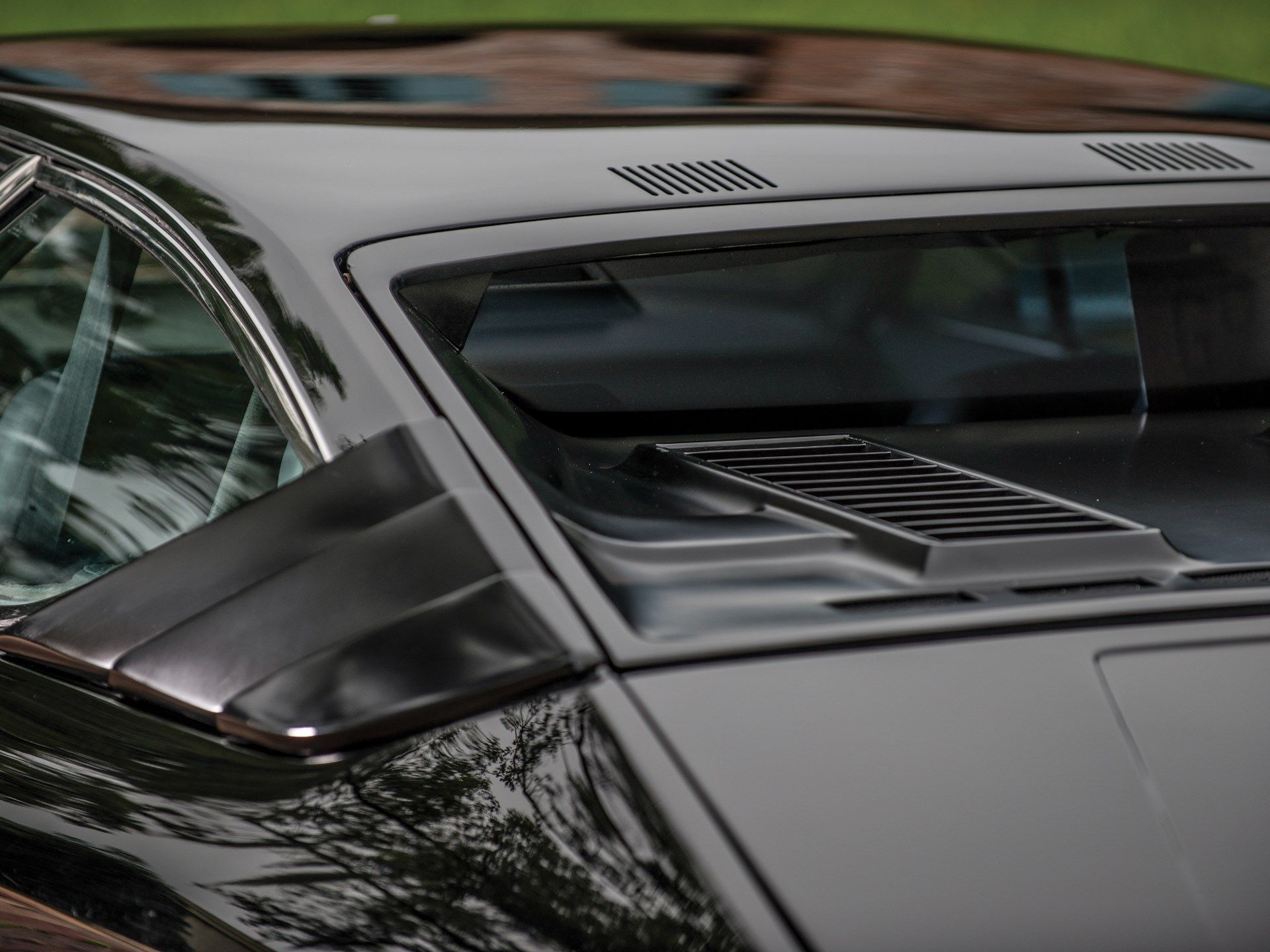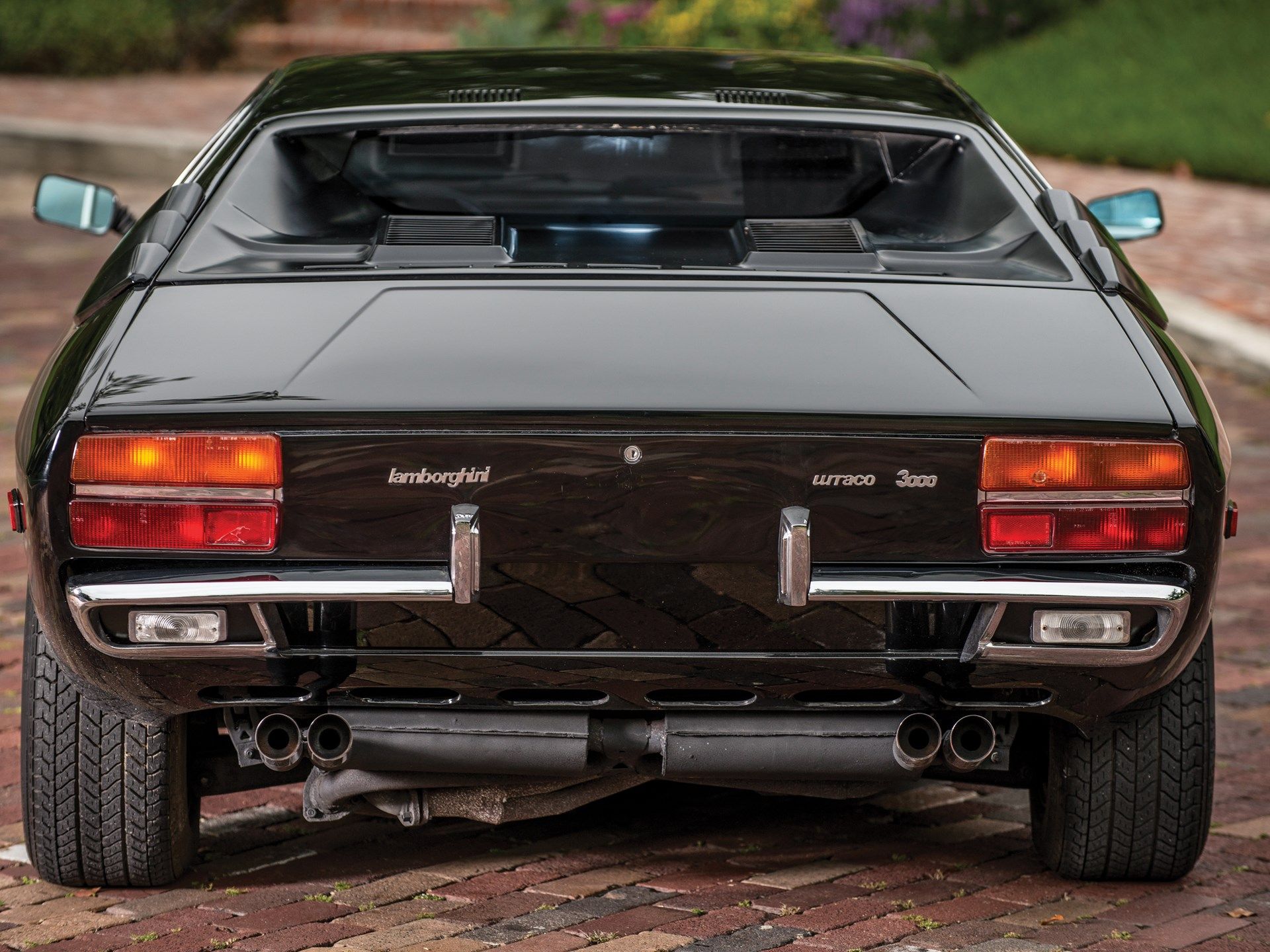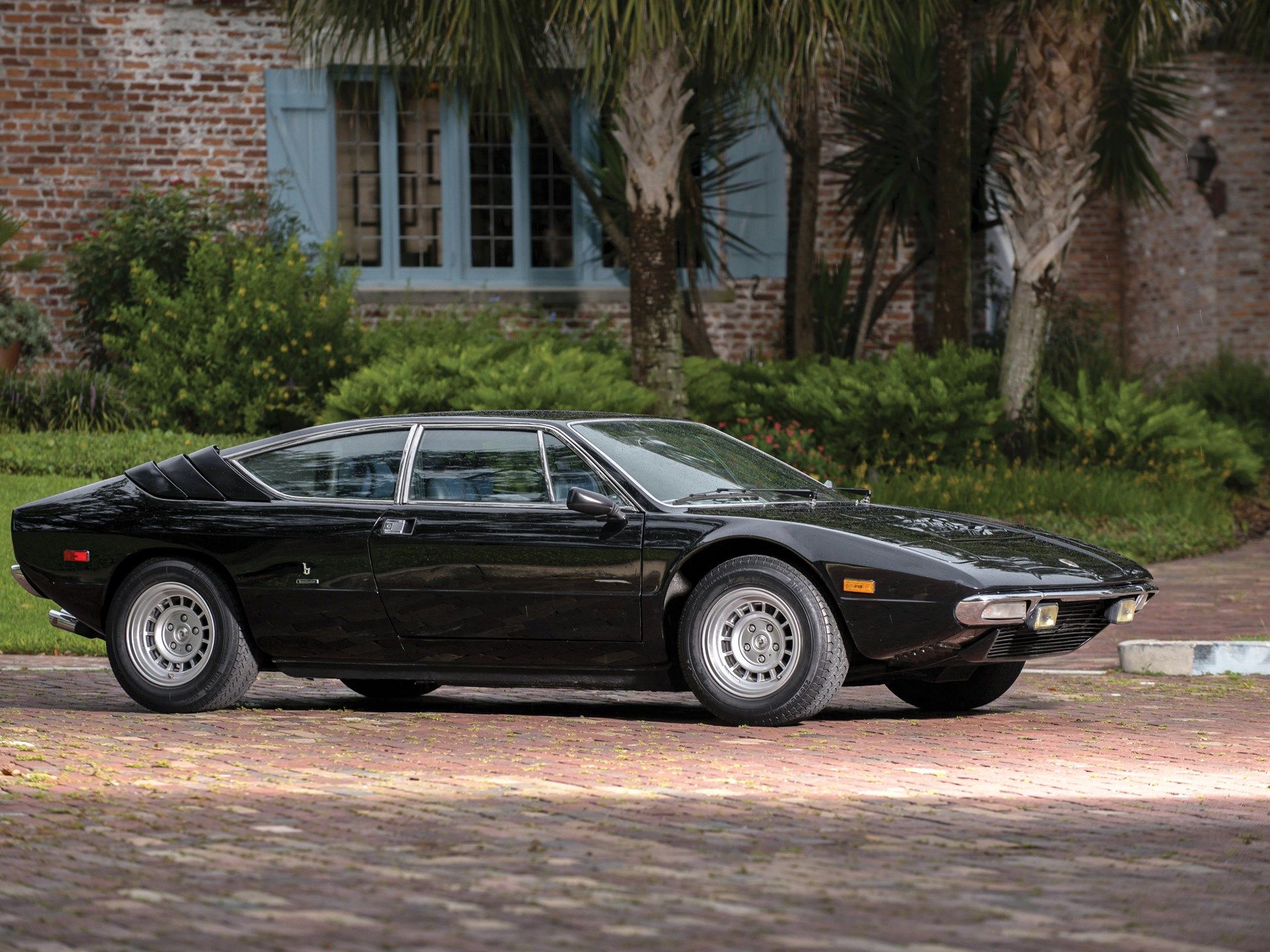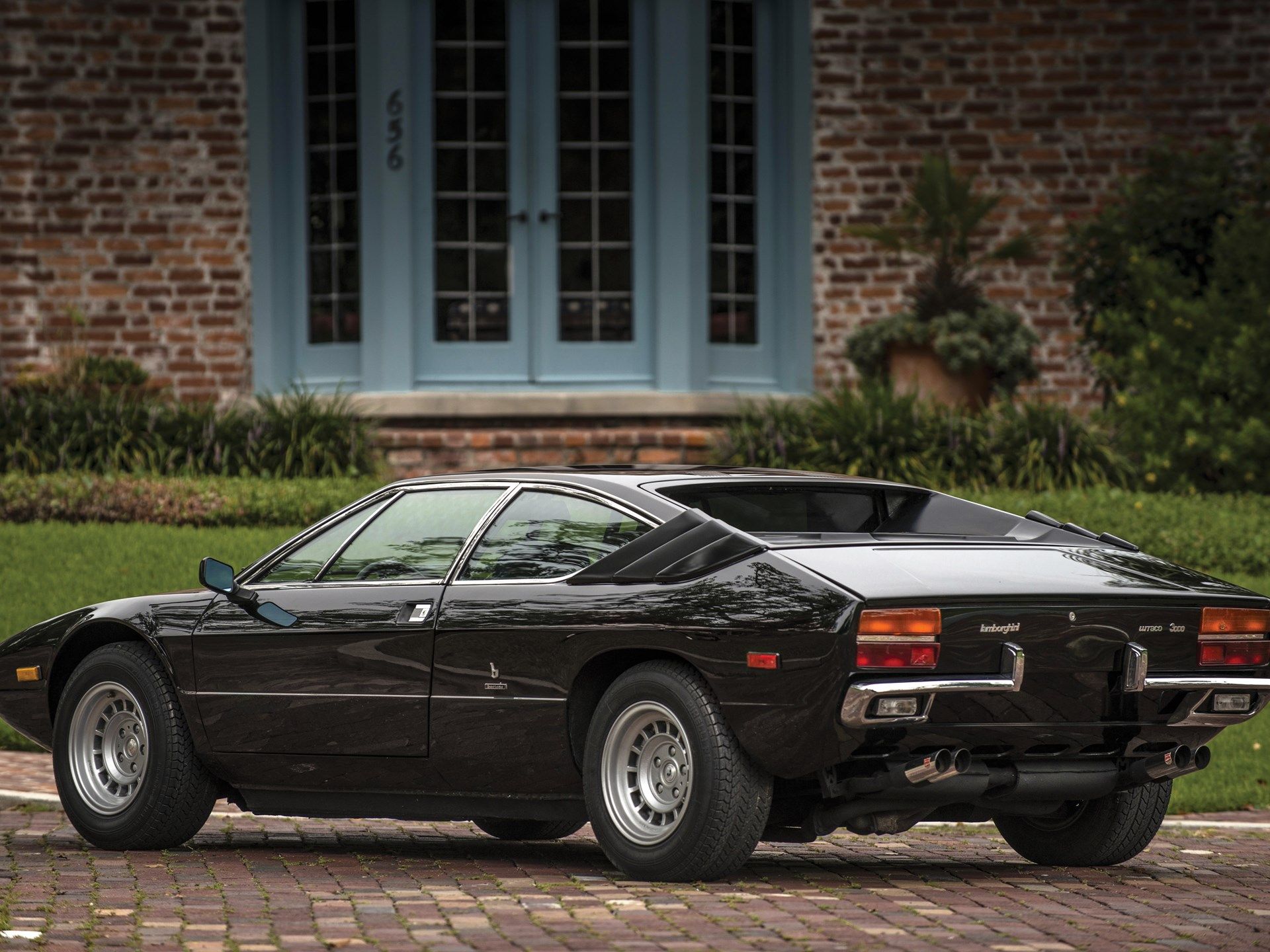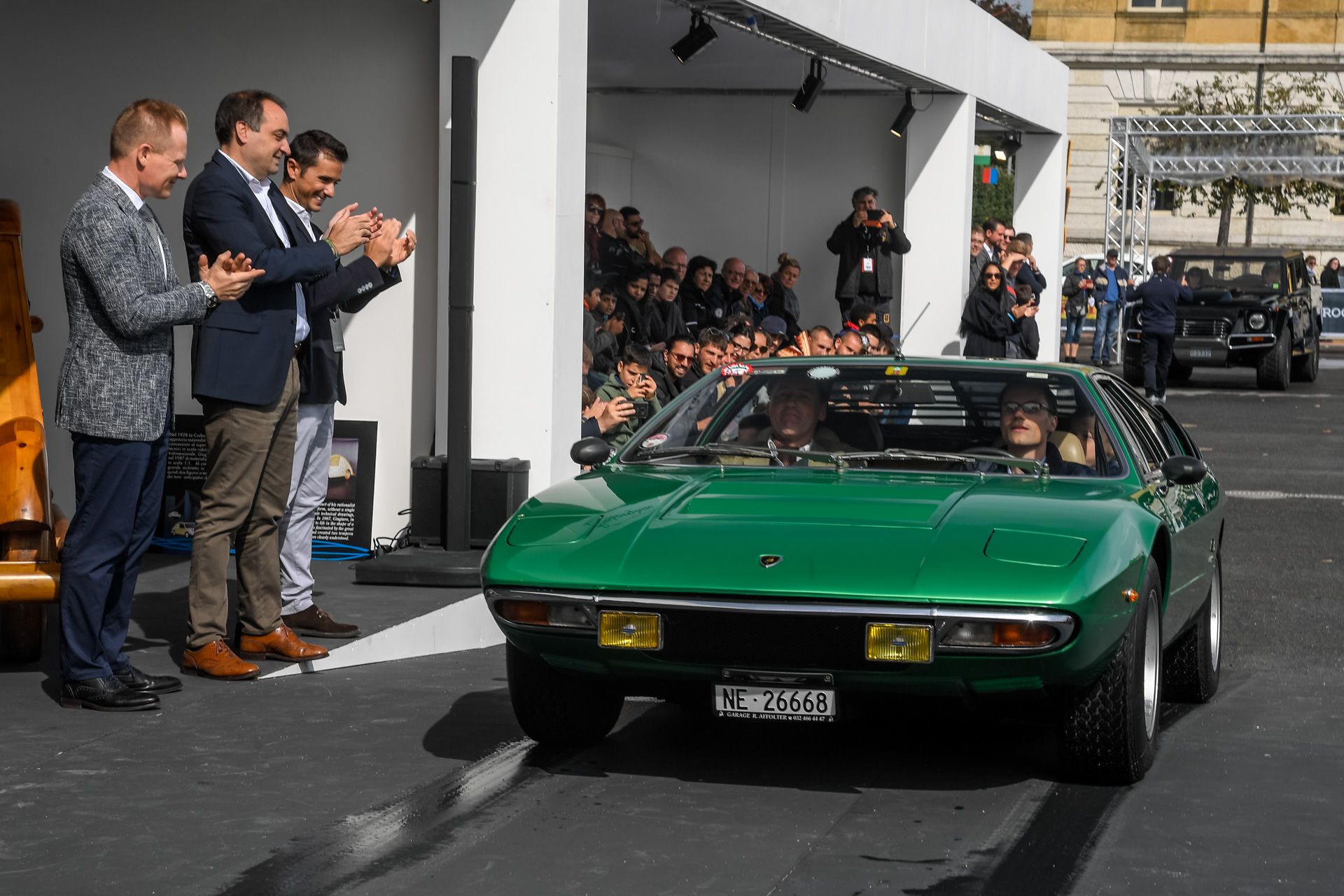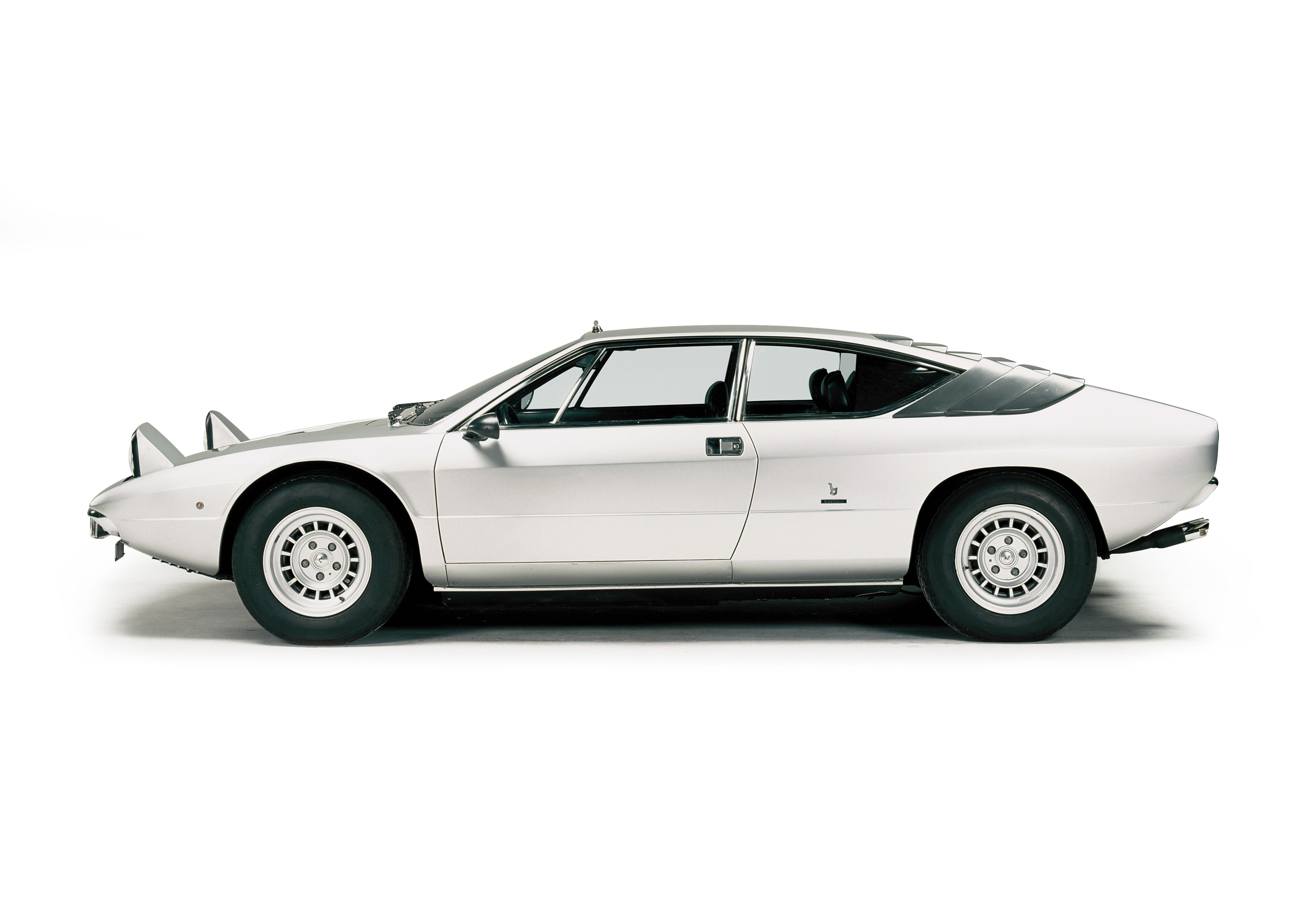The Urraco heralded Lamborghini's entry in the budget supercar niche. It was available in a number of guises, the P200, P250, and P300. Less than 800 units of this sleek V-8 mid-engined Italian beauty were sold before production ceased back in 1979. In spite of its rarity, the Urraco still fails to command the kind of prices you'll see early Dinos being sold for.
Presented at the 1970 Turin Auto Show, the Urraco hit the market two years later as an affordable 2+2 supercar that wasn't really a supercar and stood in either the Miura's or the Countach's shadow throughout its lifespan. Its design, penned by Marcello Gandini during his stint at Bertone, leaves something to be desired as far as dramatism goes with the more dedicated 2-seater Merak from Maserati being clearly the best-looking budget supercar at the time.
For all its shortcomings, many of which were mocked during a Top Gear episode which centered around the Merak, the Dino 308 GT4 and the Urraco, the Urraco was considered a brilliant car by Lamborghini engineers as it incorporated a number of industry firsts and other novel ideas for the early '70s, many of which have been forgotten as time wore on and the scissor doors of the Countach turned the heads of just about any automotive aficionado.
1973 - 1979 Lamborghini Urraco
- Make: Array
- Model: 1973 - 1979 Lamborghini Urraco
- [do not use] Vehicle Model: Array
Lamborghini Urraco Exterior
The Lamborghini Urraco was conceived at a time when Lamborghini's revenue flow was starting to dry out. At the time, the company based in Sant'Agata Bolognese offered a number of V-12-powered behemoths that could only really fit the pockets of a well-to-do clientele. But Ferruccio Lamborghini, who originally financed his adventure into car building with the profits of Lamborghini Trattori, the truck-building business, saw the need for a budget model in the range.
These first prototypes had an edgier profile with the rear wheel wells similar in design with those on the Countach LP400. There were also two air vents that opened up aft of the rear side windows for better cooling of the V-8 engine. But Lamborghini disliked these propositions and, as such, Bertone's Marcello Gandini came with a third full-size prototype that incorporated many of the design touches that were kept on the production model. For instance, this third car, which was shown at both the Lamborghini and the Bertone stands during the 1970 edition of the Turin Auto Show, had two pop-up headlights moved closer to the leading edge of the nose. It also had smoother lines with rounded wheel wells and a ducktail-style rear wing incorporated in the rear bodywork. One of the key elements of the production car that wasn't yet present were the curved louvers on the shoulders of the car as Lamborghini realized that the openings present on the first two prototypes were much needed.
According to Paulo Stanzani, who was acting as Chief Technical Officer at Lamborghini at the time, that sole prototype lived a busy life. After the Torino Auto Show, it was also displayed at the Geneva Auto Show and a number of other shows to grow customer interest in a model that should've been to Lamborghini what the Boxster actually was for Porsche in the '90s. The Italian manufacturer planned to build 2,000 Urracos a year but that never happened. Instead, across the car's 6-year production cycle, less than a 1,000 were built in different guises.
After it was done touring Europe's auto shows, the prototype was used for extensive road testing, Stanzani pointing out that Lamborghini wanted to clock over 62,000 miles with it to test its reliability. After road testing was done, much of which was carried out by American Bob Wallace, the car was used for the crash testing procedures. Later on, Wallace, who was the chief test driver at the time, used one of the earlier prototypes to build his race-going Urraco that was never actually homologated for GT competition due to Lamborghini's low production output.
Still, the production-ready Urraco arrived in 1972 for the 1973 model year and it looked good, not as good as the Merak, but balanced enough for a car that theoretically could seat four adults. Up front, the nose opens up to make room for a chromed bumper which incorporates both the orange indicators, at the bumper's extremities, and the bulky rectangular fog lights. This bumper was later replaced by a plastic that followed the chiseled profile of the front end and incorporated rectangular indicators instead of the elongated round ones on the earlier models. The U.S.-specific P111 model came with an even larger bumper in-line with American low-speed safety regulations.
Below the bumper, the Urraco features a rectangular air vent in the middle, that acts as a continuation of the narrow inlet between the two fog lights. The dual headlights are placed slightly towards the edge of the front bodywork. The square front hood is placed closer towards the windshield and features two backward-facing inlets on the earlier models, while most P300 cars come with a louvered front hood with black strips. While the chromed front bumper was replaced quite quickly, the chromed window frames were kept a bit longer.
From the side, you'll notice the toned-down wedge styling of the Urraco. The window is angled quite aggressively and the roofline does slant at the back as you'd expect, but nothing is quite as edgy as on the Countach or the ensuing Silhouette. The miniature fender flares are also much more subtle than the boxy ones on the Silhouette.
A single character line runs from the edge of the nose, all the way towards the straight-cut back of the car. The windows seem large enough but they're positioned at an angle which means visibility from the inside is minimal. What is more, early models come with only one aerodynamic exterior rear-view mirror on the driver's side, only later Lamborghini adding a mirror on the passenger's side. The Urraco rides on 14-inch Campagnolo rims that are basically identical to those seen on early Countach LP400 models.
At the back, you're greeted by a vertical fascia with two rectangular taillights in either of the top corners. The orange indicators are separated from the brake lights by a bar. The two-piece chromed (on the early models) bumper snakes its way in between, forming a C-shape to nestle the backup lights. Bigger, more protruding, black bumpers replaced these slimmer ones on American models and P300 European models.
The louvered hood, completed by the louvered side air vents, is a design element taken from the Miura. But, unlike with the Miura, the louvers don't go all the way down. Instead, there's also a trunk that's separated from the engine lid.
Lamborghini Urraco Exterior Dimensions:
|
Wheelbase: |
96.5 inches |
|
Length: |
167.3 inches |
|
Width: |
69.3 inches |
|
Height: |
45.7 inches |
Lamborghini Urraco Interior
The padded, leather-wrapped interior of the Urraco seems welcoming enough at first until you realize this is a supercar from the '70s and it's not particularly comfortable. Indeed, the seats offer some degree of lateral support but the driving position is lackluster. Then there's also the four-spoke steering wheel that lacks a steering column, the rack being attached directly to the firewall placed underneath the windshield. That's why it's deep-dished like that.
Below the dash itself, there's a retreated center console which is just wide enough for two round air vents. The ventilation controls sit in the widened top part of the console while a few more buttons are placed on a flat surface of the dash. The radio is placed further to the right (on LHD cars) on the driver's side where the glove box is also located.
The stick shift for the 5-speed gearbox sits in a suspended part of the center console that continues in between the seats where the handbrake is to be found. The console actually goes up and connects with the back bench that offers enough head room and leg room for two kids, although Lamborghini advertised it as a 2+2 supercar, suggesting that adults could fit in there which is a bit of a stretch.
Lamborghini Urraco Drivetrain
With a compression ratio of 10.5:1 and fed by four twin-barrel down-draught Weber 40IDF carburetors, the 2.5-liter Urraco - hence the P250 moniker - put out 220 horsepower at 7,500 rpm and 162 pound-feet of torque at 3,750 rpm. Then there was the 2.0-liter version which was built for the Italian market alone. It came at a time when the Government was imposing prohibitive taxes on cars with engines bigger than 2.0-liters. The reduced capacity was achieved by decreasing the bore from 3.46 inches to just 3 inches. The stroke remained the same at 2 inches.
While the smaller engine flew under the radar in Italy, it also offered dismal performance. Only 182 horsepower at 7,500 rpm and 130 pound-feet of torque at 3,800 rpm came out from the P200 when it was new. That's why Lamborghini only ever built 66 of these cars that couldn't exceed 135 mph.
At the 1974 Turin Auto Show, Lamborghini introduced the Urraco P300. It came with unchanged styling from the S - which was the improved model after people complained about the poor build quality of the first batch of cars that were partially assembled at Bertone in mid-1972.
The Urraco was the first production car of any kind to come with all-independent MacPherson struts all around, with coil springs and telescopic dampers. Steering was by worm & roller while Girling ventilated disc brakes with double hydraulic circuit brought the car to a halt quickly.
Lamborghini Urraco Specifications:
|
Engine: |
V-8 OHV, 16-valve, light-alloy and aluminum block with gearbox and differential built in the same block and pressed-in liners, mid-mounted, rear wheel drive |
|
Output: |
182 horsepower (P200), 220 horsepower (P250), 250 horsepower (P300), at 7,500 rpm. |
|
Torque |
varies between 130 and 195 pound-feet, at 3,500-3,800 rpm |
|
Fuel feed: |
Electric Bendix fuel pump, 4 twin-barrel down-draught Weber 40 IDF 1 or Solex C40P117 carburetors |
|
Cooling: |
Water-cooled |
|
Suspension: |
All-independent with MacPhersons, coil springs, and telescopic dampers |
|
Steering: |
Worm & roller |
|
Brakes: |
Girling ventilated disc brakes |
|
Gearbox: |
5-speed all-synchromesh manual transmission |
|
Weight: |
1,426 pounds (P200/P250), 1,500 (P300) |
Lamborghini Urraco Pricing
Although less than 800 Urracos were ever built, 791 to be precise, they aren't yet considered to be full-on classics like the Jarama, Espada or the 3500 GT.
Indeed, you won't find an Urraco nowadays for the kind of money James May paid for his black example during the 'Budget Supercar' Top Gear episode. That's because May was able to find a (broken) Urraco for about $13,000 all the way back in 2005. Even Lamborghini's first budget supercar appreciated since then.
One of the reasons why people don't elbow their way to buy Urracos is because they're tediously hard to maintain on the road. In fact, many Urraco owners keep their cars for visual pleasure only as they're broken almost beyond repair. In fact, the amount of 'avant-garde' technology that went into the Urraco is the car's Achilles heel with more basic supercars from the era, like the 911 that Ferruccio targeted, going strong after all these years.
Lamborghini Urraco Competition
Maserati Merak
The Merak was introduced one year after the Bora, in 1972. It shared the front end with its more exotic brother but, from the B-pillar onwards, the Merak is its own thing. Giorgetto Giugiaro was tasked with morphing the Bora into the Merak, and he did that by deleting the Bora's clear glass greenhouse and, in its place, adding two open flying buttresses on either side and extending the roofline to not ruin the car's line.
Since it was built during Citroen's ownership of Maserati, the Merak came with a hydraulic brake system and hydraulically-operated pop-up headlights. It also packed a small V-6 in the middle, unlike the Lamborghini and Ferrari that sported V-8s. The engine sat within the confines of a tubular subframe that was attached to the main steel monocoque. It had independent suspension all around with unequal A-arms with coaxial coil springs and telescopic shock absorbers.
The V-6 was an evolution of the designed by Giulio Alfieri-designed 2.7-liter unit that found its way under the hood of the Citroen SM. But, in the Merak, the engine had a capacity of 3.0-liters and put out 220 horsepower at 6,500 rpm and 199 pound-feet of torque at 4,500 rpm. Being heavier than the Urraco at 2,976 pounds, the Merak was also more of a cruiser than the Urraco which handled brilliantly for the standards of the day. Almost 2,000 Meraks were built in total between 1972 and 1983 which means they're easier to find and, if you go for a later model produced under De Tomaso ownership, easier to keep on the road.
Ferrari 308 GT4
<806110>
Introduced in 1973 under the Dino badge, it only received the Ferrari logo three years later, by which time the 208 GT4 had also been introduced. It was a less elegant follow-up to the 206/246 GT and sat on a tubular spaceframe chassis based on that of the original Dino but stretched so that the wheelbase measured 100.4 inches.
The 308 GT4, as the name suggests, came with a 3.0-liter, transversally-mounted, V-8 in-unit with the 5-speed transaxle gearbox. 255 horsepower was the power output on the European-spec model while the U.S. market got a choked Dino that only produced 240 horsepower although it featured the same quad Weber 40 DCNF carburetors.
While Niki Lauda, the 3-time Formula 1 World Driver's Champion from Austria, helped perfect the car's demeanor by tweaking with the chassis, the Urraco's MacPherson setup makes it the better driver's car between the two. The Dino was also designed by Gandini and enjoyed limited success with 2,860 308 GT4s being built in seven years. You can now buy one from anywhere between $40,000 and $75,000.
Read our full review on the 1973 - 1980 Ferrari Dino 308 GT4.
Conclusion
The Urraco remains an underrated car in Lamborghini's history. It was Lamborghini's first stab at building a budget supercar. While it didn't reach the heights of success that Lamborghini was aiming for, the tradition of more affordable cars remained relevant at Lamborghini and that's how the world ended up with the massively popular Gallardo.
The people that know the ins and outs of Lamborghini's earlier exploits, like former Chief Engineer Paolo Stanzani, talk of an advanced car that packed "innumerable technological innovations." It was plagued by the fuel crisis, numerous strikes, poor reliability and poor build quality on earlier models - that deterred quite a few potential clients - and the fact that the world continued to focus on Lamborghini's bigger V-12 models.
Further Reading
Read our full review on the 1973 - 1990 Lamborghini Countach.


